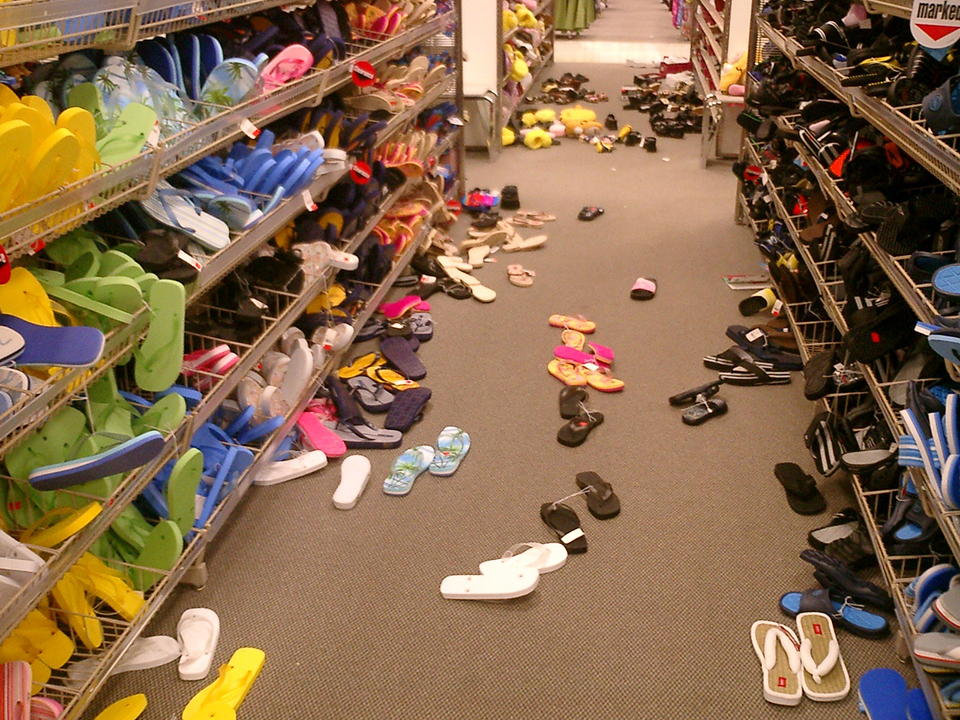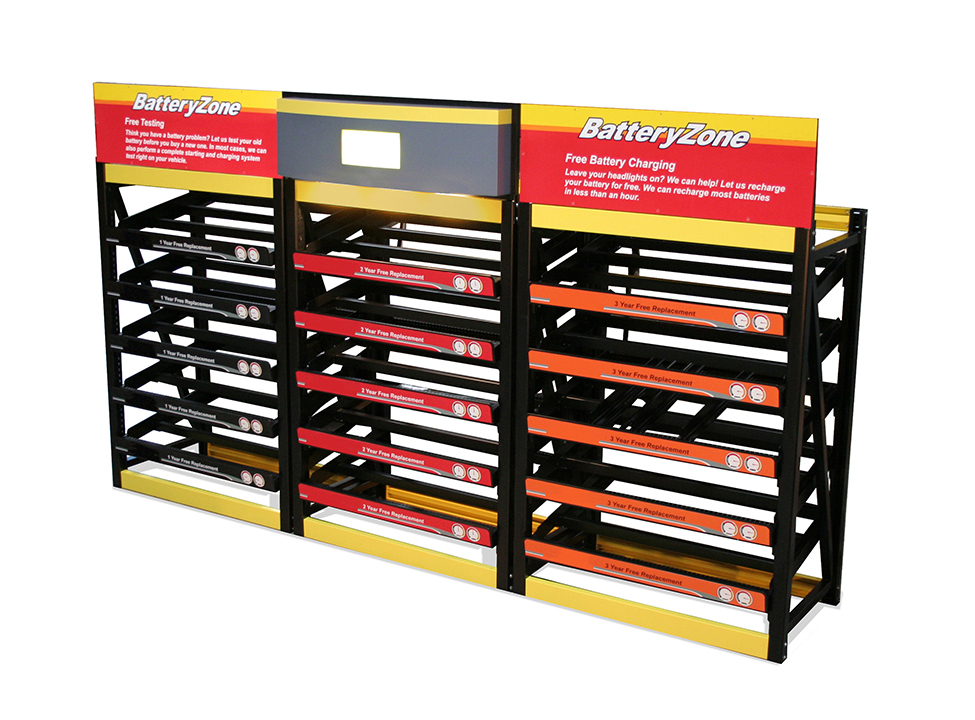Welcome to Part II in our series on how to maximize return on investment by reducing the risk of your POP program. In case you missed it, be sure to check out Part I of our series in which we discussed practical ways to manage 5 of the most common risks associated with POP programs, namely design risk, freight damage risk, deployment risk, piracy risk, and performance risk. Let’s dig in to the last 5 risks.
- Maintenance Risk– In the course of the design process, it is important to think through how your product will be maintained in the store. Will you be relying solely on store associates to maintain your display or will you have your sales team or contract rep group maintain the display? Many displays look great when fully loaded during the photo shoot, but once they make it to the store floor, they quickly look messy and poorly maintained.
Designing your display with organization in mind is one way to help manage this risk. For example, if your plan is to merchandise hats on a regular flat shelf, there is a greater likelihood that the hats will look a mess at the end of a busy shopping day than if you create pockets which provide the hats with a logical home, thereby encouraging shoppers to keep the hats organized. Other maintenance considerations include things like the ease with which your display can be cleaned and kept free of dust. All of these maintenance issues should be considered early in the design process.
- Risk of Obsolescence– The faster your display becomes obsolete, the lower your return on investment. For example, if you invest $100 in a display and the display lasts for 5 years, you can amortize the cost of the display over 5 years of sales. Your ROI will no doubt be better than the ROI on a display that become obsolete after 6 months.
Aside from fashion-related obsolescence, one of the biggest reasons a display becomes obsolete is a company changes it products or introduces new products. The new products and updated packaging sizes no longer fit on the display, effectively rendering the display obsolete. The best way to ensure your display does not die a premature death by way of obsolescence is by designing modularity and configurability into your display. That will enable you, for example, to keep the basic structure of the fixture and only change out accessories such as shelves, baskets, etc.
- Durability Risk– As with the case of obsolescence risk, durability risk relates to the lifespan of your display and is governed by the same economic principles. Retail environments can be abusive so it is worth the time during the design process to be intentional about the targeted lifespan you desire for your display. A lot of these decisions come down to material choices. For example, a shelf display made of particle board with a melamine finish would not be expected to last as long as one made of MDF with a laminate finish. Similarly, investing in a clear plastic tray to protect your corrugated display from residual moisture that occurs after mopping the floors can prove to be a wise investment.
- Location Risk– Where your display is placed in the store is an important determinant of the success of the display. Understanding the store’s planogram and where your display fits in a key part of the planning process and negotiation with the retailer. If your display is going to be stuck in a dark corner in the back of the store, you can expect poor results relative to securing a prime-time location in high-traffic areas of the store. Displays that have casters are often moved around to different parts of the store which can help keep things fresh and drive impulse sales. However, there is a downside risk to offering mobile displays since they can also be moved to less attractive areas in the store. Having a clear agreement with the retailer upfront is the best way to manage location risk.
- Out-of-Stock Risk– Being out of stock equates to lost sales. Be sure your design makes it easy for the retailer to track and manage product inventory. While inventory is typically managed by using inventory management software, it is often helpful to have SKU labels and reorder reminder labels on your POP display. One customer shared with us that they loved the merchandising table that enabled them to creatively display their personal care products in unique configurations that would entice shoppers, but they experienced a lot of out-of-stocks which dragged down their sales performance. Creating POP displays that make it easy to keep products in stock will go a long way toward maximizing sales and return on investment.
Before starting your next POP program, give careful consideration on how to best manage these risks and how to maximize return on investment.
Jim Hollen is the owner and President of RICH LTD. (www.richltd.com), a 35+ year-old California-based point-of-purchase display, retail store fixture, and merchandising solutions firm which has been named among the Top 50 U.S. POP display companies for 9 consecutive years. A former management consultant with McKinsey & Co. and graduate of Stanford Business School, Jim Hollen has served more than 3000 brands and retailers over more than 20 years and has authored nearly 500 blogs and e-Books on a wide range of topics related to POP displays, store fixtures, and retail merchandising.
Jim has been to China more than 50 times and has worked directly with more than 30 factories in Asia across a broad range of material categories, including metal, wood, acrylic, injection molded and vacuum formed plastic, corrugated, glass, LED lighting, digital media player, and more. Jim Hollen also oversees RICH LTD.’s domestic manufacturing operation and has experience manufacturing, sourcing, and importing from numerous Asian countries as well as Vietnam and Mexico.
His experience working with brands and retailers spans more than 25 industries such as food and beverage, apparel, consumer electronics, cosmetics/beauty, sporting goods, automotive, pet, gifts and souvenirs, toys, wine and spirits, home improvement, jewelry, eyewear, footwear, consumer products, mass market retail, specialty retail, convenience stores, and numerous other product/retailer categories.






